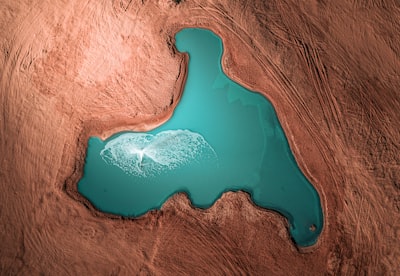Overview
Kati Thanda–Lake Eyre, commonly referred to as Lake Eyre, is Australia's largest salt lake and the lowest point on the Australian continent, situated in the arid interior of South Australia. It forms part of the larger Lake Eyre Basin, one of the world's largest internally draining river systems. The lake spans approximately 9,500 square kilometers when full, although this is a rare occurrence.
Geographical and Hydrological Characteristics
Lake Eyre is located about 700 kilometers north of Adelaide, within the Kati Thanda–Lake Eyre National Park. The region typically receives less than 150 millimeters of rainfall annually, making it part of one of the most arid zones in the world. The lake bed mostly remains a dried salt pan, but it is occasionally filled by floodwaters flowing from distant Queensland and other northern catchments via rivers such as the Warburton and Cooper Creeks.
Lake Eyre's elevation is approximately 15 meters below sea level, and during rare filling events it can reach depths of up to 6 meters. Complete or near-complete fillings have been recorded only a few times since European records began in the 19th century, most notably in 1950, 1974, and 1984. More often, patchy shallow flooding occurs.
Ecological Significance
Periodic flooding triggers explosive ecological activity in an environment otherwise characterized by extreme dryness. Floodwaters support a diverse and ephemeral ecosystem of algae, brine shrimp, fish, and a massive influx of breeding waterbirds. Kati Thanda–Lake Eyre is particularly noted for attracting large colonies of pelicans, ducks, gulls, and migratory birds from across Australia and as far away as Asia and Papua New Guinea. Dormant invertebrate eggs and plant seeds can survive for years in the salt crust until water returns, leading to rapid life cycles during the wet periods.
Cultural and Historical Importance
The lake is known as Kati Thanda among the Arabana people, its traditional custodians, who have inhabited the region for thousands of years. The area holds spiritual and cultural significance for Indigenous Australians, featuring in numerous Dreamtime stories. Europeans first mapped the area in the mid–19th century, and the name 'Lake Eyre' commemorates the explorer Edward John Eyre.
Environmental and Climatic Influences
The episodic filling of Lake Eyre is governed by variable climatic conditions, such as intense tropical rainfall events and changing weather patterns like El Niño and La Niña. Climate change is predicted to influence the frequency and intensity of such flood events, though scientific consensus suggests these occurrences will remain highly erratic.
Tourism and Scientific Research
Filling events attract tourists, scientists, and birdwatchers from around the world, providing significant but temporary boosts to the remote outback economy. Researchers study the lake as a model for desert river hydrology, biological resilience, and the impact of climate variability in extreme environments.
Conservation
Kati Thanda–Lake Eyre is protected within the boundaries of a national park, ensuring habitat conservation and the protection of unique ecological and cultural values. Ongoing scientific monitoring contributes to understanding how changing climate and water management practices may shape its future.
See Also
- Lake Eyre Basin
- Inland flooding in Australia
- Desert ecosystem dynamics
- Traditional owners and cultural heritage
References
- Australian Government Department of Climate Change, Energy, the Environment and Water
- Kati Thanda–Lake Eyre National Park publications
- Academic journals on Australian hydrology and ecology

Comments
No comments yet. Be the first to comment!